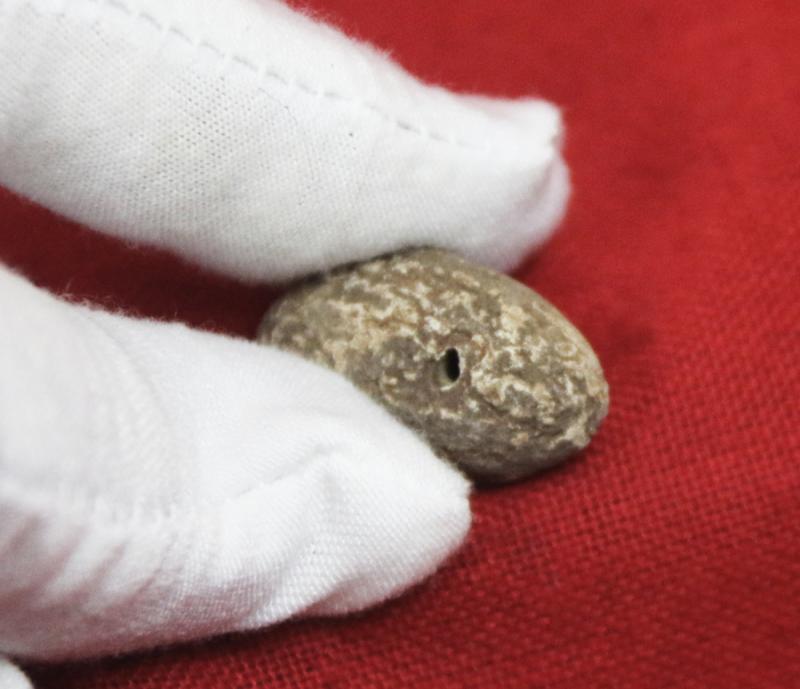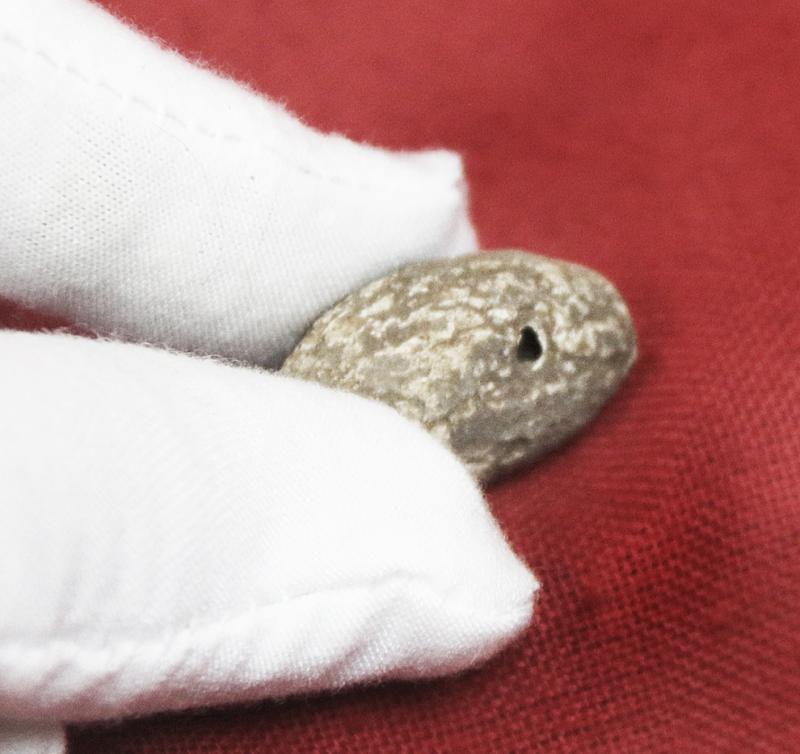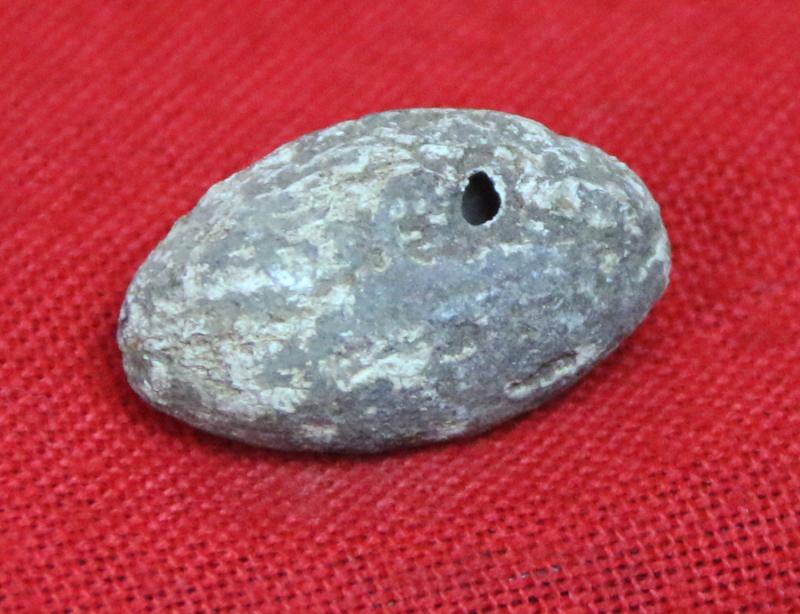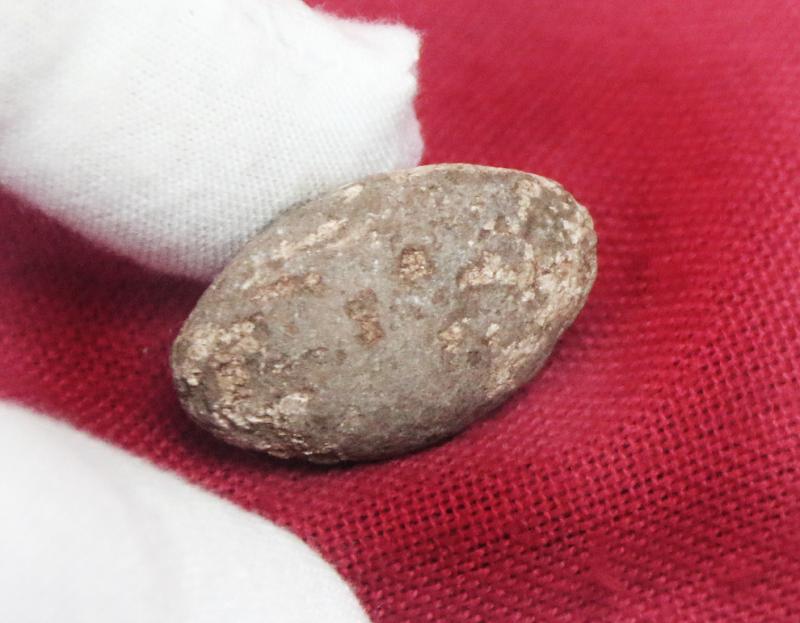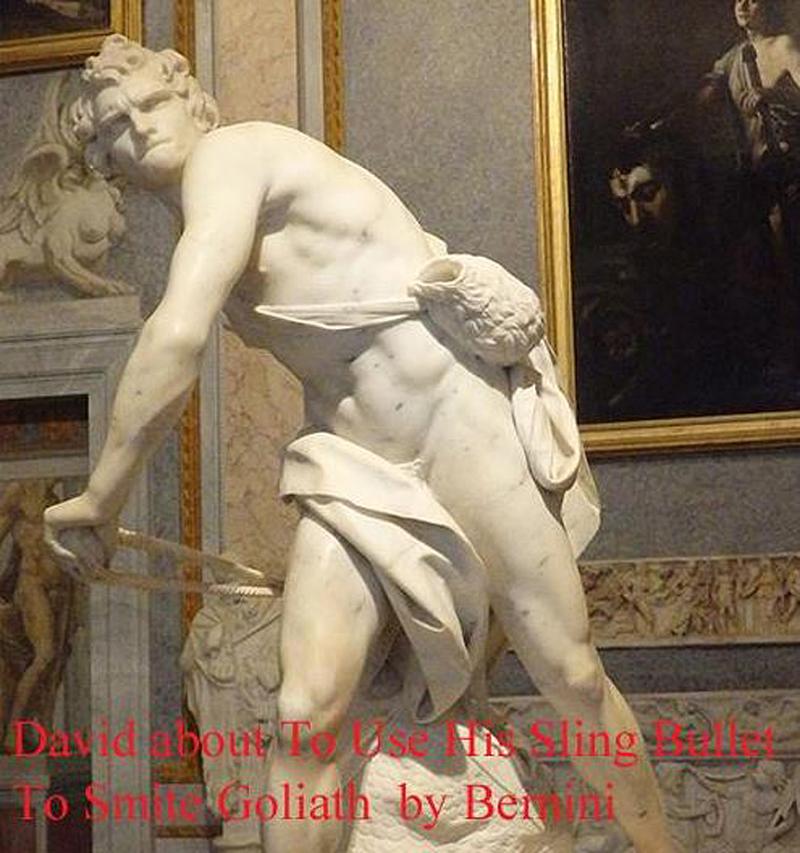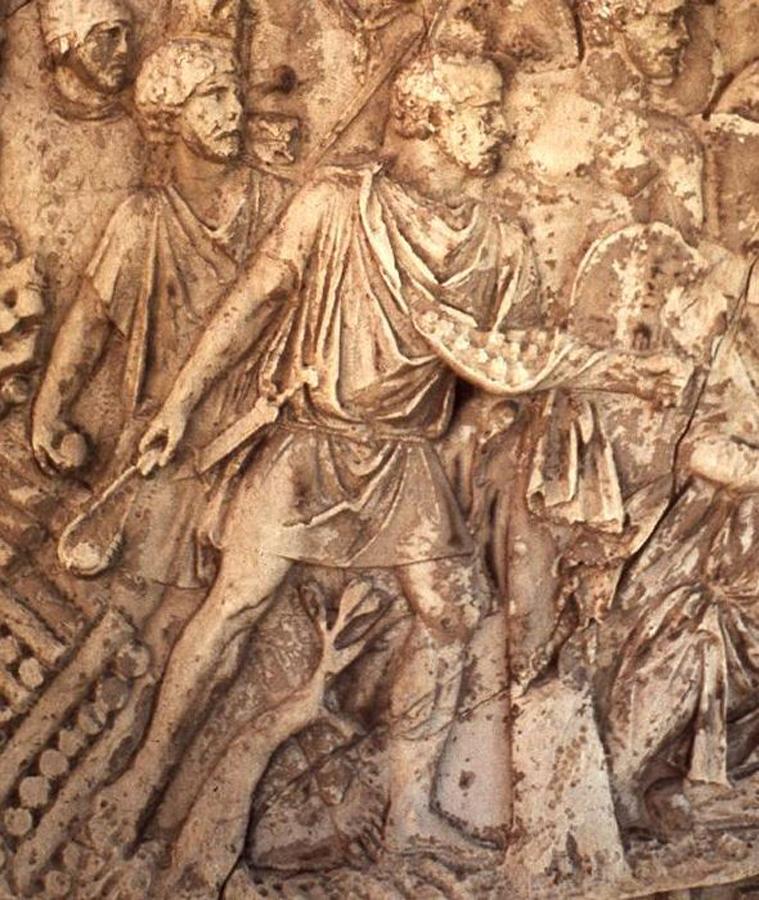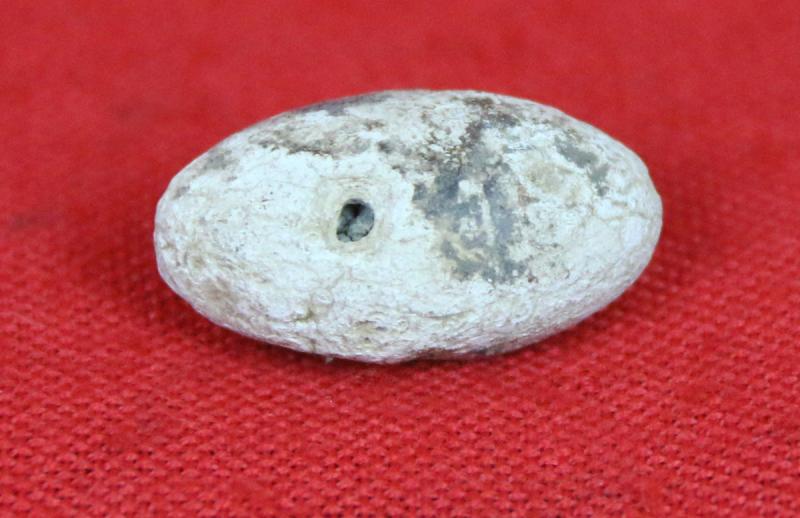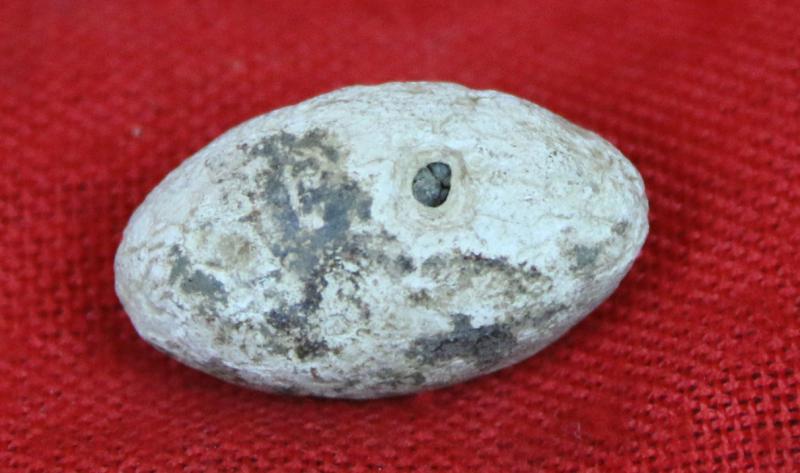A Superb Original Imperial Roman Legionary's "Whistling" Sling Bullet Circa 1st to 2nd century AD.
Identical to the few found at an archaeological dig at a Roman Fort site in southwestern Scotland a few years ago, and one of a very small collection of fine original sling bullets of antiquity we acquired.
Over 1,800 years ago, Roman troops used "whistling" sling bullets as a "terror weapon" against their barbarian foes, such as were in Scotland and the Celts in England, according to archaeologists who found the cast lead bullets at a site in Scotland.
Weighing about 1 ounce (30 grams), each of the bullets had been drilled with a 0.2-inch (5 millimeters) hole that the researchers think was designed to give the soaring bullets a sharp buzzing or whistling noise in flight.
The bullets were found recently at Burnswark Hill in southwestern Scotland, where a massive Roman attack against native defenders in a hilltop fort took place in the second century A.D. These holes converted the bullets into a "terror weapon," said archaeologist John Reid of the Trimontium Trust, a Scottish historical society directing the first major archaeological investigation in 50 years of the Burnswark Hill site.
"You don't just have these silent but deadly bullets flying over; you've got a sound effect coming off them that would keep the defenders' heads down," Reid told Live Science. "Every army likes an edge over its opponents, so this was an ingenious edge on the permutation of sling bullets."
The whistling bullets were also smaller than typical sling bullets, and the researchers think the soldiers may have used several of them in their slings — made from two long cords held in the throwing hand, attached to a pouch that holds the ammunition — so they could hurl multiple bullets at a target with one throw.
"You can easily shoot them in groups of three of four, so you get a scattergun effect," Reid said. "We think they're for close-quarter skirmishing, for getting quite close to the enemy." Onasandrius wrote the 1st C. BC, in his book "Strategy". "The Sling is the deadly weapon used by light infantry because lead is of the same colour as the air and therefore not visible, thus the impact is unexpected and not only smites hard, but the bullet penetrates deeply into the victims flesh". Used by Roman auxiliary troops like Greeks, Sicilians, North Africans, but after the Roman conquest of the Balearic Islands elite slingers were always the Balearic that fought in the legions of Julius Caesar.
Together with arrows and catapults, sling-shots formed a key part of the long-range fire of the Roman army.
Lead bullets were cast in the shape of lemons or 'acorns', which would weigh around 1.7 ounces (50g).
Weighing around 0.7 ounces (20g), the holes were around a fifth of an inch (5mm) wide and the same deep.
While the size of these bullets would have made them not terribly dangerous, experiments using replicas of these small bullets showed that they produced a whistling noise while in flight.
It is thought the sound is produced by the air moving over the small opening, much like when blowing over the top of a milk bottle.
This has led some theories that these smaller bullets were used to invoke terror in the enemy.
It is a tactic that has been used by military forces around the world.About 20 per cent of the lead sling bullets found at Burnswark Hill had been drilled with holes.
This was a significant amount of effort to prepare enough ammunition for an assault, Dr Reid said. 'It's a tremendous amount of work to do, to just chuck them away.'
'Even more intriguingly, the mysterious holes proved to confer an aerophonic quality,' Dr Reid said in Current Archaeology.
'In flight, these lead shot whistled, or more accurately gave off a mechanical buzzing sound eerily reminiscent of an agitated wasp.' In Livy’s History of Rome, which was completed in 9 A.D., he states,
A hundred slingers were recruited from Aegium and Patrae and Dymae. These peoples were trained from boyhood … Having been trained to shoot through rings of moderate circumference from long distances, they would wound not merely the heads of their enemies but any part of the face at which they might have aimed. Photos of one of the three we acquired from a collector, we only have one remaining sling bullet, all near identical, see photos 8 and 9 in the gallery
Every item is accompanied with our unique, Certificate of Authenticity. Of course any certificate of authenticity, given by even the best specialist dealers, in any field, all around the world, is simply a piece of paper,…however, ours is backed up with the fact we are the largest dealers of our kind in the world, with over 100 years and four generation’s of professional trading experience behind us
Code: 24505
220.00 GBP

